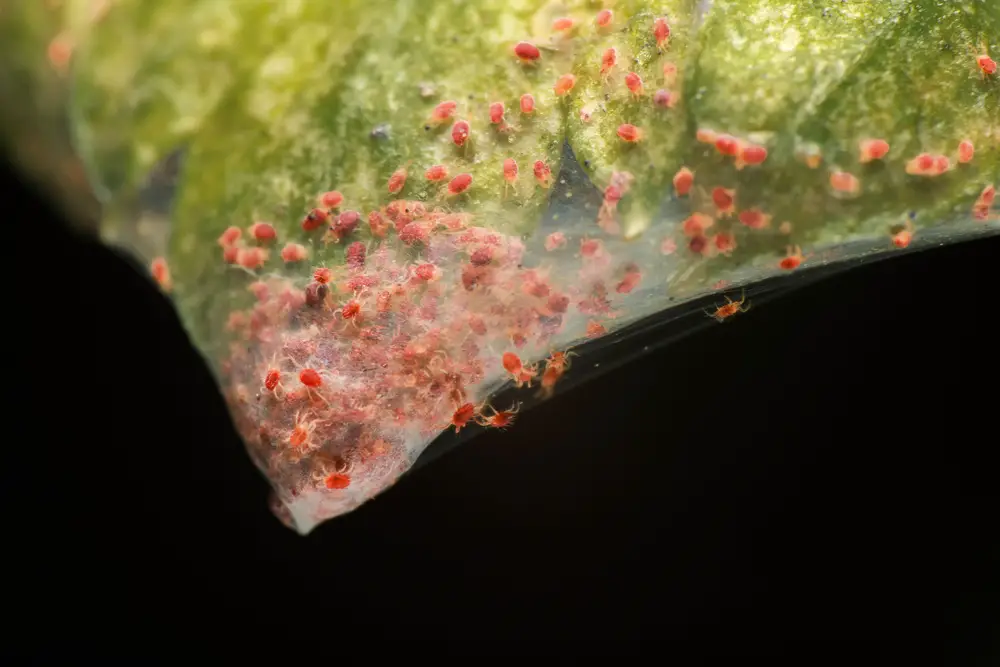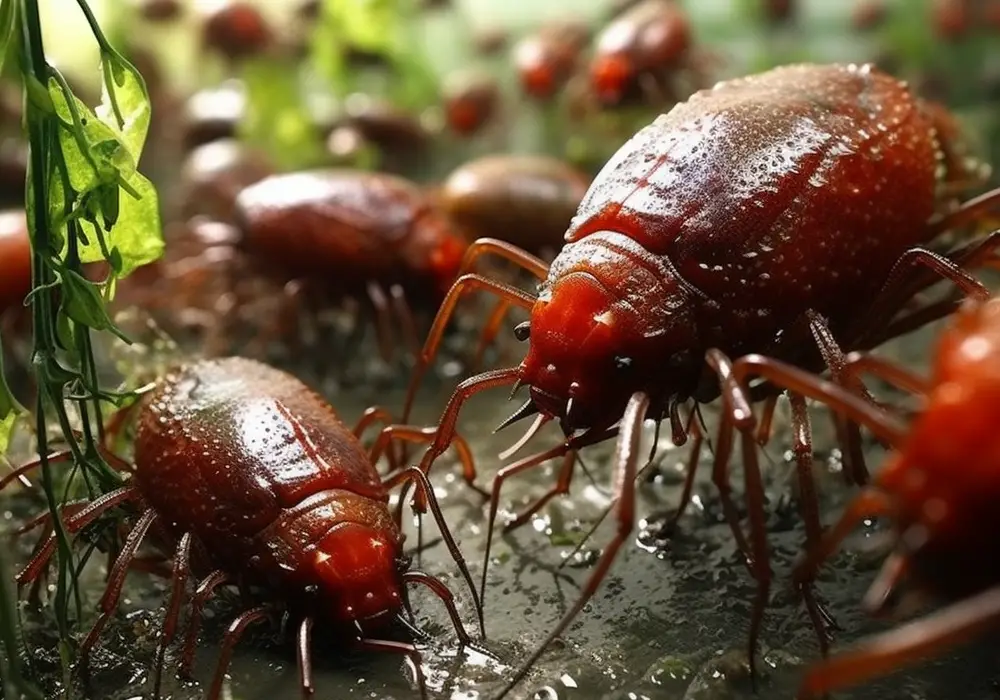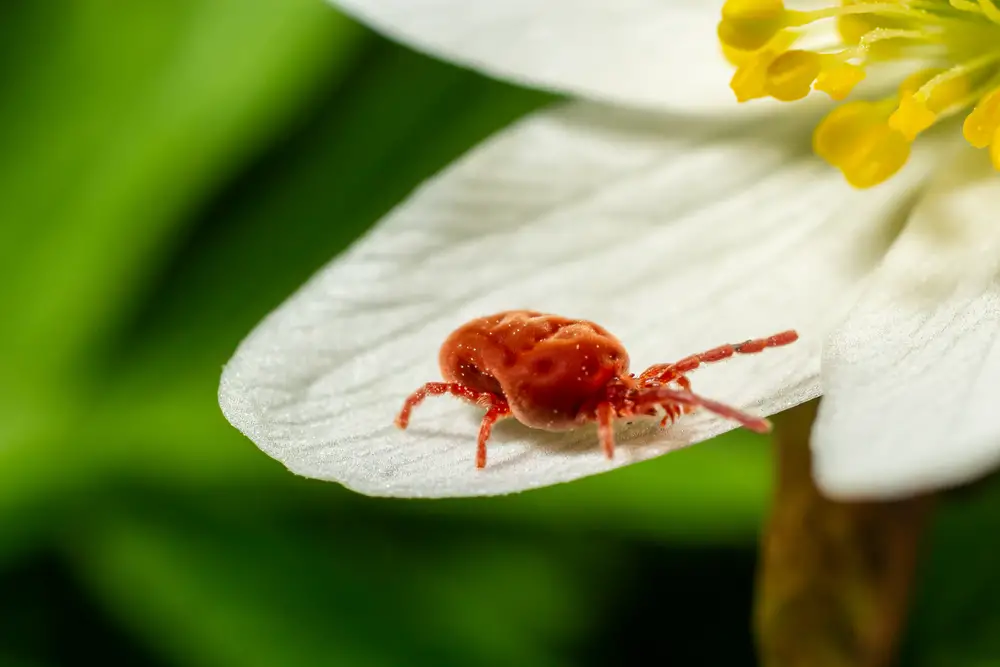Spider mites are tiny pests that can cause significant damage to plants. They are commonly found in gardens, greenhouses, and indoor plants.
Spider mites are not limited to plants and can thrive in various environments. They are known to infest carpets, upholstery, and other fabrics.
Quick Answer:
Spider mites are primarily plant pests and are not adapted to live in carpets. They rely on plant material for sustenance and specific environmental conditions for survival, which carpets do not offer. If you find mites in your home’s carpet, it is more likely that they are a different type of mite, such as dust mites.
What Are Spider Mites
Spider mites are tiny arachnids that belong to the Tetranychidae family. They are closely related to spiders and ticks and have eight legs. These pests are common in gardens, but they can also infest indoor plants and even carpets.
There are many species of spider mites, but the most common ones are the two-spotted spider mite and the red spider mite. Two-spotted spider mites are translucent and have a speckled look due to the presence of two dark spots on their backs.
On the other hand, red spider mites are red or black and have a similar speckled appearance.
The Life Cycle of Spider Mites
Spider mites have a relatively short life cycle, which makes them difficult to control. The entire life cycle can last from 5 to 20 days, depending on the species and environmental conditions.
The life cycle of spider mites consists of four stages: egg, larva, nymph, and adult. Female spider mites lay their eggs on the underside of leaves, and the eggs hatch into larvae within a few days.
The larvae then molt into nymphs, which develop into adults after two more molts.
Spider mites reproduce quickly, and a single female can lay up to 20 eggs per day. This means that a small infestation can quickly turn into a large one if left untreated.
Spider Mites and Their Habitats

Spider mites are tiny arachnids that belong to the family Tetranychidae. They are known for their ability to feed on plants and cause damage to crops. However, spider mites can also live in other habitats, including carpets.
Outdoor Habitats
Spider mites are commonly found in outdoor habitats, such as gardens, fields, and orchards. They prefer warm, dry conditions and often thrive in the summer months. Spider mites can be found on a variety of plants, including trees, shrubs, and flowers.
They typically reside on the undersides of leaves, where they can easily feed on plant sap.
Indoor Habitats
Spider mites can also live in indoor habitats, such as house plants. They can be transported into homes through infested plants or on clothing.
Once inside, spider mites can quickly spread to other plants in the home. They prefer warm, dry conditions and often thrive in homes with low humidity.
To prevent spider mites from infesting indoor plants, it is important to regularly inspect plants for signs of infestation. Spider mites can be identified by their webbing and the yellowing of leaves.
If an infestation is detected, the affected plant should be isolated and treated with an insecticide.
Spider Mites and Carpets
Spider mites are tiny pests that can infest carpets in homes. These pests are known to be very destructive and can cause significant damage to carpets if left untreated.
Spider mites thrive in warm and dry environments, and carpets provide the perfect conditions for them to breed and spread.
When spider mites infest carpets, they leave behind dark spots that are often mistaken for dirt or stains. These spots are actually the excrement of the spider mites and can be a sign of a serious infestation.
If left untreated, spider mites can quickly spread to other areas of the home and cause even more damage.
Effects of Spider Mites on Carpets
Spider mites can cause significant damage to carpets over time. They feed on the fibers of the carpet, which weakens the material and causes it to break down. This can lead to holes and tears in the carpet, which can be expensive to repair or replace.
In addition to the physical damage, spider mites can also cause health problems for people living in the home. They can trigger allergies and asthma, and their feces can be a breeding ground for bacteria and other harmful organisms.
To prevent spider mites from infesting carpets, it is important to keep the home clean and free of debris.
Regular vacuuming can help remove any spider mites that may have already infested the carpet, and using a dehumidifier can help reduce the humidity in the home and make it less hospitable to these pests.
Conditions Favoring Spider Mites
Spider mites are common pests that can infest a variety of plants, including those found indoors. While they are not known to live in carpets, they can thrive in warm and dry conditions with low humidity.
Temperature and Humidity
Spider mites prefer warm and dry conditions, with temperatures ranging from 70 to 80 degrees Fahrenheit. They are also able to survive in high temperatures, up to 110 degrees Fahrenheit.
Low humidity levels are also favorable for spider mites, as they are able to absorb moisture from the air.
Plant Health
Spider mites are attracted to plants that are under stress or weakened by environmental factors. They feed on the leaves of plants, sucking out the plant juice and causing damage to the foliage.
Moisture is also important for plant health, as it helps to keep the leaves hydrated and healthy.
In order to prevent spider mites from infesting plants, it is important to maintain a healthy environment for the plants.
This includes providing adequate moisture and avoiding conditions that are too warm and dry. Regular monitoring of plants can also help to catch spider mite infestations early before they have a chance to spread.
Detection and Identification of Spider Mites
Spider mites are tiny pests that can cause significant damage to plants and crops. They can also infest carpets and other household items. Identifying spider mites is crucial in controlling their spread and preventing further damage.
Visual Identification
Spider mites are difficult to spot with the naked eye due to their small size. However, they can be detected by looking for the following signs:
- Tiny spots on carpets or other surfaces
- Webbing on carpets or other surfaces
- Discoloration or yellowing of plants
When examining carpets, it is important to look for tiny spots that may be difficult to see. Spider mites can leave behind small droplets of excrement, which can appear as tiny black or brown spots.
Using a Magnifying Glass
To get a closer look at spider mites, a magnifying glass can be used.
This tool can help identify spider mites by looking for the following characteristics:
- Two dark spots on the body
- Eight legs
- Oval-shaped body
- Colors ranging from green to brown to red
It is important to note that spider mites can vary in color depending on their species and age. Using a magnifying glass can help identify these pests accurately and prevent misidentification.
Spider Mites and Other Pests

Spider mites are tiny arachnids that feed on plants and can cause damage to crops and gardens. While they are not commonly found in carpets, it is important to understand how they compare to other common household pests.
Comparison with Ants
Ants are social insects that live in colonies and can be found in many different environments. Unlike spider mites, ants do not feed on plants. Instead, they are attracted to food sources such as crumbs or spills on the carpet.
Ants can be a nuisance in the home, but they do not pose a threat to plant life.
Comparison with Dust Mites
Dust mites are microscopic creatures that feed on dead skin cells and can cause allergies in humans.
They are commonly found in household dust, including carpets. Unlike spider mites, dust mites do not cause damage to plants. However, they can be harmful to people with allergies or respiratory issues.
Comparison with Carpet Beetles
Carpet beetles are small insects that feed on natural fibers such as wool and silk. They can cause damage to carpets, clothing, and other household items. Unlike spider mites, carpet beetles do not feed on plants.
However, they can be a nuisance in the home and can cause significant damage if left unchecked.
Health Risks Associated with Spider Mites
Spider mites are tiny pests that can cause damage to plants, but can they cause harm to humans or pets?
While spider mites do not pose a direct threat to human or pet health, they can cause some health concerns if left untreated.
Effects on Humans
Spider mites can cause skin irritation and allergies in humans. When spider mites come into contact with human skin, they can cause redness, itching, and even rashes. This is because spider mites produce a protein that can cause an allergic reaction in some people.
If someone is experiencing skin irritation from spider mites, they should wash the affected area with soap and water. If the irritation persists, they should seek medical attention.
Effects on Pets
Spider mites can also cause health concerns for pets. If a pet comes into contact with spider mites, they may experience skin irritation and itching. This is because spider mites can irritate a pet’s skin and fur.
If a pet is experiencing skin irritation from spider mites, they should be taken to a veterinarian. The veterinarian may recommend a medicated shampoo or other treatment to help alleviate the irritation.
Prevention and Control of Spider Mites
Spider mites can be difficult to control, but there are several preventive measures and treatment options available.
Cleaning and Vacuuming
One of the most effective ways to prevent spider mites from infesting your carpet is to keep it clean. Regular vacuuming can help remove any dust or debris that may attract spider mites.
It is important to use a vacuum with a HEPA filter to ensure that the mites are trapped and removed from the carpet.
Additionally, steam cleaning can help kill any spider mites that may be present in the carpet. The high temperature of the steam can kill both adult mites and their eggs. It is recommended to hire a professional steam cleaning service to ensure that the carpet is properly cleaned.
Using Pesticides
If spider mites have already infested your carpet, using pesticides may be necessary. Miticides and insecticides are two types of pesticides that can be effective against spider mites.
Miticides are specifically designed to kill mites and can be applied directly to the carpet. Insecticides, on the other hand, are designed to kill a variety of insects and may not be as effective against spider mites.
It is important to read the label carefully and choose a product that is specifically designed to kill spider mites.
Natural Predators
Another option for controlling spider mites is to introduce natural predators into the environment. Predatory mites are a type of mite that feed on spider mites and can be effective in controlling their population.
Ladybugs and lacewings are also natural predators that feed on spider mites. These insects can be purchased and released into the environment to help control the spider mite population.


